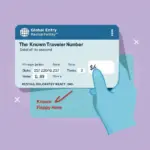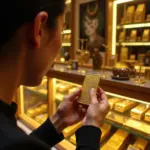Hanoi’s subsidy-era cuisine, a culinary echo of Vietnam’s past, offers a unique glimpse into the resourcefulness and resilience of its people. From simple street food to home-cooked meals, these dishes tell stories of a time marked by scarcity yet brimming with community spirit. This exploration delves into the heart of Hanoi’s subsidy-era food, revealing its history, iconic dishes, and where you can experience these nostalgic flavors today.
Remembering the Subsidy Period: A Culinary Journey Through Time
The subsidy period, also known as the “bao cấp” era, spanned from the late 1970s to the mid-1980s. Rationing and limited access to ingredients shaped the culinary landscape, giving rise to dishes that prioritized simplicity and made the most of available resources. This era fostered a culture of sharing and communal dining, where neighbors often pooled resources to create meals together. The flavors of this period, while humble, hold a special place in the hearts of many Hanoians, evoking memories of shared struggles and enduring community bonds.
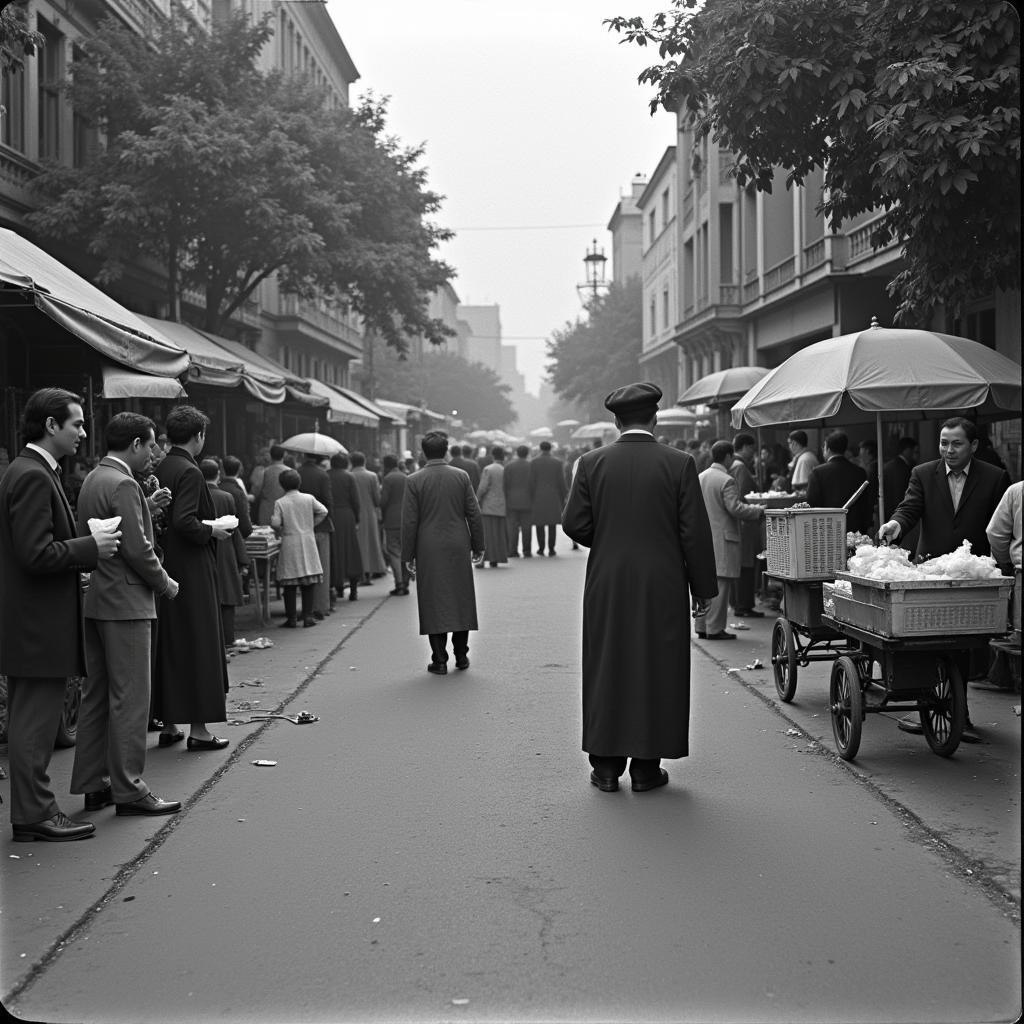 Hanoi street food vendors during the subsidy period
Hanoi street food vendors during the subsidy period
Iconic Subsidy-Era Dishes: A Taste of History
Several dishes became emblematic of the subsidy period, each reflecting the ingenuity and adaptability of Hanoian cooks. Bún chả, grilled pork with vermicelli noodles and dipping sauce, remained a popular choice, often made with smaller portions of meat. Phở, the beloved Vietnamese soup, was sometimes prepared with less meat and more broth. Simple vegetable stir-fries, using seasonal produce, and cơm bình dân (affordable rice dishes) were staples in many households. These dishes, though simple, represent a time of shared experience and culinary innovation.
Exploring the Flavors of Cơm độn: Resourcefulness on a Plate
One dish that truly embodies the resourcefulness of the subsidy era is cơm độn. This dish involves mixing rice with other grains, such as cassava or sweet potato, to stretch limited supplies. While initially born out of necessity, cơm độn has become a symbol of the era’s resilience, reminding us of the creativity born from challenging circumstances.
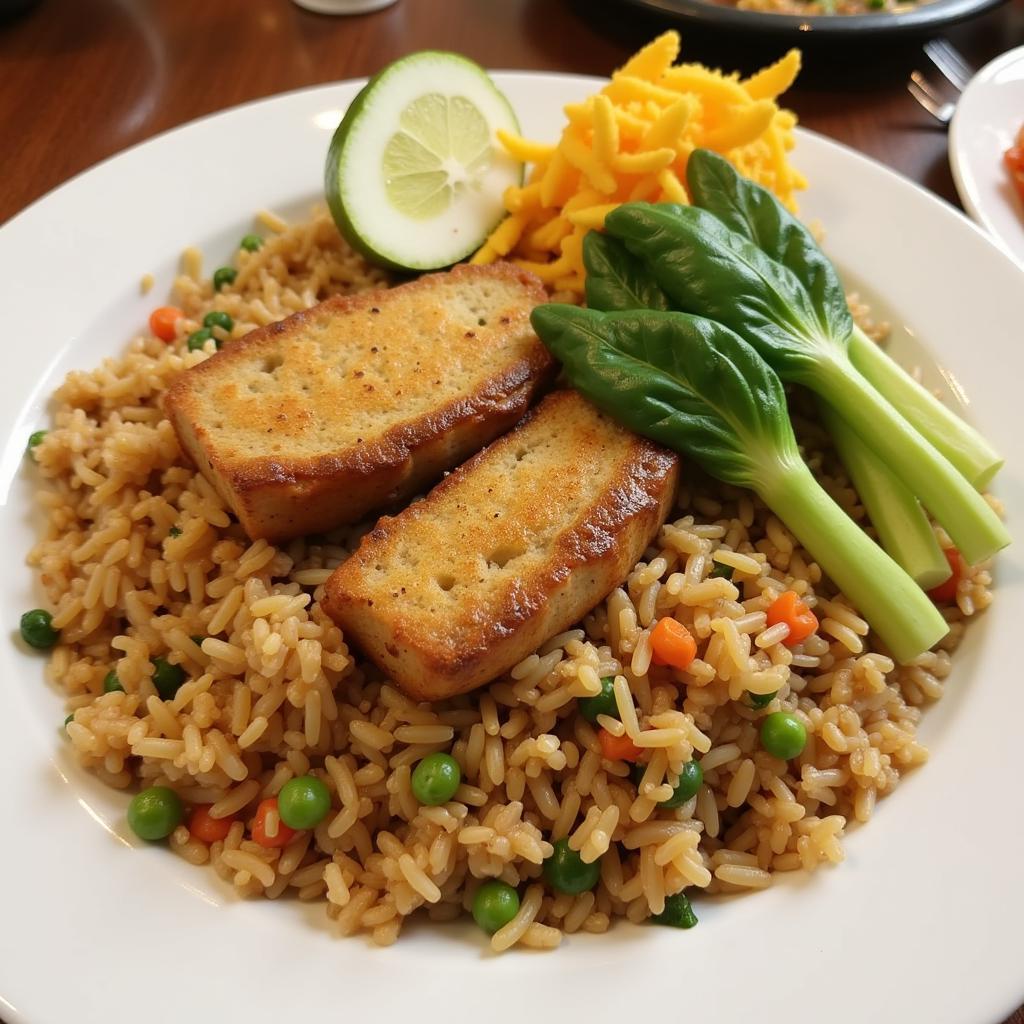 A plate of Cơm độn, a typical subsidy-era meal in Vietnam.
A plate of Cơm độn, a typical subsidy-era meal in Vietnam.
Where to Experience Subsidy-Era Food in Hanoi Today
While the subsidy period has passed, the culinary legacy of this era lives on in Hanoi. Some older restaurants continue to serve traditional recipes, offering a taste of the past. Talking to Hanoian locals, especially those who lived through the subsidy period, can also provide valuable insights into the food and culture of this time.
TRAVELCAR: Your Gateway to Hanoi’s Culinary History
Experience the rich tapestry of Hanoi’s culinary history with TRAVELCAR. Our diverse fleet of 16-seater, 29-seater, and 45-seater vehicles are perfect for exploring the city’s hidden culinary gems. Whether you’re seeking authentic subsidy-era dishes or exploring modern Vietnamese cuisine, we can tailor a tour to suit your interests. We also offer convenient airport transfers and customized tours to ensure a seamless and unforgettable culinary adventure.
“The subsidy era shaped not only the food we ate but also our relationship with food,” shares Mr. Nguyen Van Duc, a Hanoi resident who lived through the period. “It taught us the value of resourcefulness and the importance of sharing.”
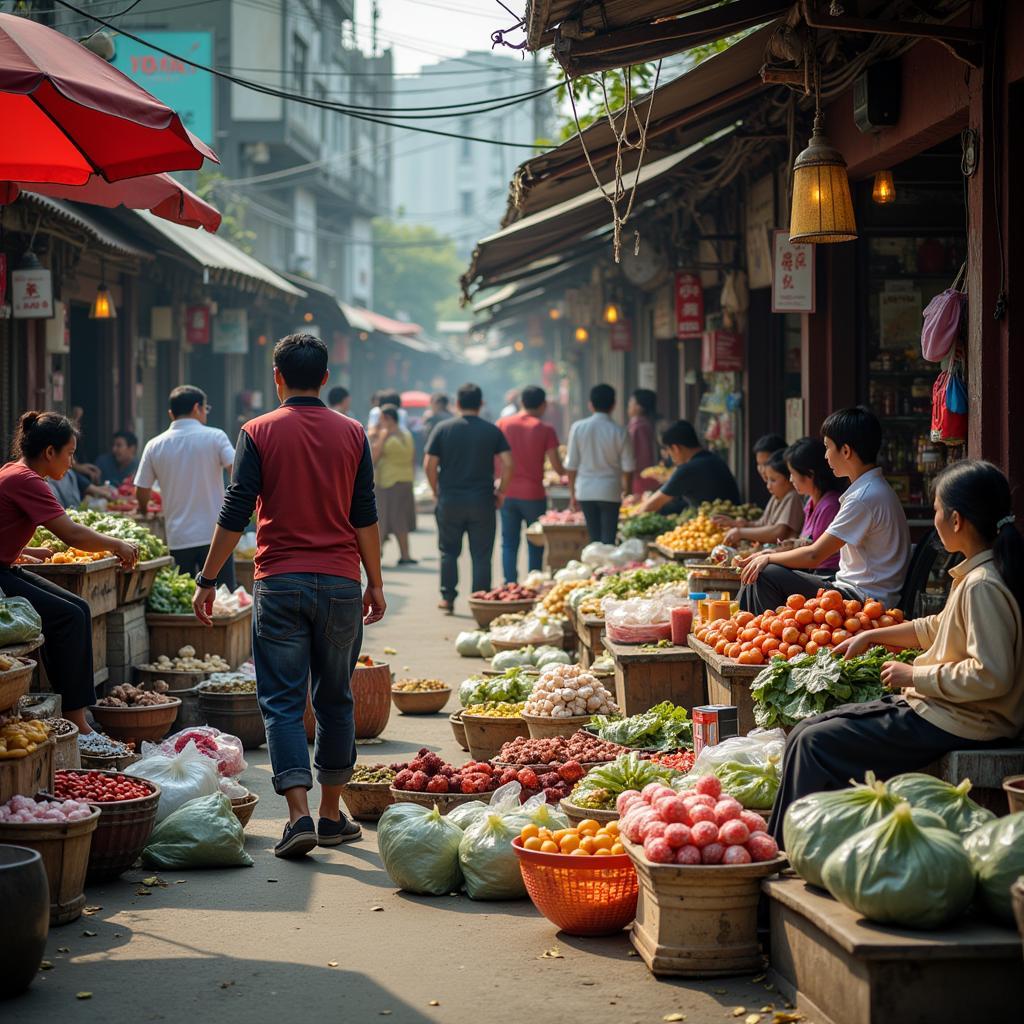 A local market in Hanoi during the subsidy period.
A local market in Hanoi during the subsidy period.
Conclusion
Hanoi’s subsidy-era cuisine provides a fascinating window into Vietnam’s past. By exploring these dishes, we gain a deeper understanding of the resourcefulness and resilience of the Hanoian people. So, embark on a culinary journey with TRAVELCAR and discover the unique flavors of Hanoi’s subsidy-era food.
FAQ
- What was the subsidy period in Vietnam?
- What are some typical subsidy-era foods?
- Where can I find restaurants serving subsidy-era food in Hanoi?
- What is cơm độn?
- What kind of transportation services does TRAVELCAR offer?
Need further assistance? Contact us at Phone: 0372960696, Email: TRAVELCAR[email protected], or visit our office at 260 Cau Giay, Hanoi. Our customer service team is available 24/7.
